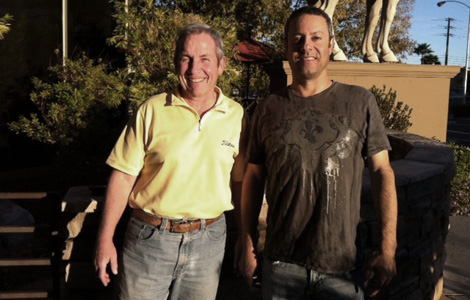The Experiment, Part One
Can an ordinary person take off and land an airplane on the first try, with only flight simulator experience? We put it to the test
If you’ve fooled around with flight simulation software for your desktop computer, you know that it can be pretty realistic. You can “fly” just about any type of airplane, from almost any airport in the world. If you go the extra mile and add rudder pedals, a control wheel and a throttle to your setup, you’ve got everything except the full motion of a multimillion dollar simulator like the ones used to train airline pilots.
Is it possible for a person to get proficient enough on this home software to be able to takeoff and land a real airplane — with no other instruction or experience? Recently, I came across a discussion on the internet by a 46-year-old electrical engineer in California who proposed that he could do just that. He said he had “tons of hours” on his flight simulation software and felt confident that he could fly an airplane around the pattern and land it safely.
I read his posting and the discussion it generated with great interest, and I even chimed in with my opinion. Flying a real airplane with only simulator experience isn’t impossible (the “Barefoot Bandit” apparently did it), but I have to think it’s extremely rare, and was firmly of the belief that this guy wouldn’t be successful. My reasoning was that the simulation software just doesn’t give the feel of the controls and the aerodynamic load on the control surfaces, which will change depending on the airspeed. Also, the software provides an artificially stable experience, whereas flight in a real airplane will provide completely different sensations.
The guy proposing this experiment, Tyler Sparks, already had an instructor lined up to fly with him, but as the online discussion continued, it seemed as if the flight would never take place. Finally, he posted that the instructor had backed out. At this point I was so interested in the experiment that I volunteered to be the instructor/safety pilot. There was no doubt in my mind that I’d have to take over the plane, but I wanted to see just how well he could do on his first time in a plane.
The basic rules for the experiment were laid out by Tyler in the first post of his online discussion:
The rules are that he will do all the preflight checks and the plane will be ready to go. He will communicate with the tower for clearance and such, and will taxi us out to the runway and line me up for take off. Weather will have to be clear and calm. After that, he can’t say or do anything to assist me, from the moment I push in the throttle. If we encounter any other air traffic, which is unlikely at this location, he will take over and, steer us clear, then I’m back on the controls. Once I (hopefully) land, he would take over and taxi us back to the parking area.
I talked to Tyler the week before heading out, just to cover some basics about the flight. The most important thing to me was his clear understanding that my main concern was safety and preventing any damage to the airplane. It was agreed that if I said “I have the airplane” at any time during the flight, he would relinquish controls without hesitation or discussion.
I flew out to meet him the day after Thanksgiving, and admit that I had some misgivings. There was really not much upside to this trip for me, other than satisfying my curiosity, and lots of downside if anything went wrong. Our rendezvous at the airport went as planned, and I was relieved to find that my initial impression from our phone conversations was confirmed. Tyler wasn’t some crazy kid. He was intelligent and very personable, and right away I felt better about my decision to participate.
We discussed the flight, reconfirming the “rules of engagement,” and it was agreed he would pick me up at 8:30 the next morning. Read Part 2 to see what happened next.
/https://tf-cmsv2-smithsonianmag-media.s3.amazonaws.com/accounts/headshot/Steve-Satre-headshot.jpg)

/https://tf-cmsv2-smithsonianmag-media.s3.amazonaws.com/accounts/headshot/Steve-Satre-headshot.jpg)